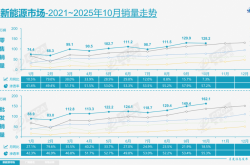Shangdao Travel Seeks Hong Kong Stock Exchange Listing: Is It Trying to Break Free from Being Gaode's 'Pawn'?
![]() 11/18 2025
11/18 2025
![]() 520
520

Introduction: Is Shangdao Travel's IPO Motivated by a Desire to Cover Losses?
Another online ride-hailing platform has entered the fray for an Initial Public Offering (IPO).
Recently, SAIC's ride-hailing arm, Shangdao Travel, officially filed its application to list on the Hong Kong Stock Exchange. As the fifth-largest player in China's online ride-hailing sector, with a shareholder roster boasting giants like Alibaba and CATL, Shangdao Travel's IPO bid has garnered significant attention.
However, beneath the glittering facade of its shareholders, Shangdao Travel faces a multitude of challenges on its path to going public.
On one hand, Shangdao Travel is currently incurring losses.
The prospectus reveals that from 2022 to the first half of 2025, Shangdao Travel recorded losses of approximately 781 million yuan, 604 million yuan, 407 million yuan, and 115 million yuan, respectively.
On the other hand, most publicly listed ride-hailing platforms have weathered turbulent times.
Last year's listing of Ruqi Mobility and this year's IPO of Cao Cao Mobility both saw their shares plunge below the issue price on their debut. Pony.ai and WeRide, which recently dual-listed on the Hong Kong Stock Exchange after their NASDAQ debut, also experienced a double-digit drop on their first trading day.
The Hong Kong Stock Exchange has also tightened its scrutiny of ride-hailing platform listings, with Dida Chuxing finally going public after five attempts.
Given these challenges, can Shangdao Travel, ranked fifth, overcome the hurdles in one fell swoop?
I. The 'Middlemen' Are Reaping All the Profits
The primary reason for Shangdao Travel's consecutive losses may lie in the high commissions charged by aggregation platforms.
The prospectus shows that from 2022 to the first half of 2025, the proportion of orders from aggregation platforms rose from 91.84% to 98.08%.
During the same period, commissions collected by aggregation platforms amounted to 273 million yuan, 327 million yuan, 442 million yuan, and 233 million yuan, respectively, accounting for 52%, 58.9%, 71.8%, and 75.3% of the company's total sales expenses.
As products of the mobile internet era, ride-hailing platforms, akin to food delivery platforms, exhibit strong bilateral network effects. Both users and drivers tend to gravitate towards larger platforms, creating a pronounced Matthew effect.
Thus, with Didi holding a dominant position, it has been arduous for other second-tier platforms to capture market share.
However, the emergence of aggregation platforms has altered this dynamic. Leveraging their traffic advantages, platforms like Gaode, Baidu, and Tencent have significantly lowered the barriers to entry in the ride-hailing industry.
Didi's market share, which once exceeded 90%, has now dwindled to around 70%.
According to data released by the Ministry of Transport, as of September 30, 2025, there were 393 licensed ride-hailing platform companies nationwide.
In September, the ride-hailing regulatory information interaction system received a total of 758 million order information, with 260 million orders originating from aggregation platforms.
Given that the number of ride-hailing platforms far outstrips that of aggregation platforms, the latter's bargaining power is significantly higher. Except for Didi, other ride-hailing platforms have essentially become 'pawns' for aggregation platforms.
With minimal differentiation in ride services, price wars have become the only weapon for second-tier ride-hailing platforms to compete.
According to Gaode's ranking mechanism, low-cost transportation capacity is prioritized for display. In response, platforms have engaged in a price war at any cost, with ride-hailing drivers bearing the brunt.
The prospectus indicates that from 2022 to the first half of 2025, the gross profit margin of Shangdao Travel's ride-hailing business steadily increased from -5.4% to 12.2%. The official explanation is effective cost management to enhance operational efficiency and profitability.
However, the prospectus does not elaborate on the specific measures taken for cost reduction and efficiency enhancement.
Nevertheless, publicly available data in the prospectus reveals that from 2022 to 2024, the number of Shangdao Travel's drivers and orders increased by 2.6 times and 1.5 times, respectively. However, the proportion of sales costs, which reflect driver earnings, in revenue decreased from 99% to 93%, and further dropped to 88.7% in the first half of 2025.
According to Dazhong Daily, a driver on the Shangdao Travel platform completed a 50-plus-kilometer trip but only received 58.66 yuan, whereas a normal 50-plus-kilometer ride typically costs over 90 yuan. This calculation suggests that Shangdao Travel's commission rate is as high as 36%, exceeding the industry's implicit 30% threshold.
In contrast, from 2022 to the first half of 2025, sales expenses accounted for 11.1%, 9.7%, 9.6%, and 10.3% of revenue, respectively. Among these, commissions collected by aggregation platforms amounted to 273 million yuan, 327 million yuan, 442 million yuan, and 233 million yuan, with their proportion in sales expenses rising from 52% to 75.3%.
In simple terms, while Shangdao Travel's overall unit cost has decreased, the proportion of commissions paid to aggregation platforms has been increasing.
Without bargaining power, second-tier ride-hailing platforms like Shangdao Travel may only serve as pawns for aggregation platforms.
In this profit chain, Gaode and others reap the profits, while Shangdao Travel bears the blame, leaving drivers to endure further hardships.
However, as the ride-hailing market becomes saturated, Shangdao Travel, which has already shouldered the blame, may face increasingly difficult times.
In July of this year, Shangdao Travel's registered capital was significantly reduced from 4.106 billion yuan to 350 million yuan, a decrease of over 90%. According to the prospectus, this reflects, among other things, the cancellation of 107.3 million yuan in registered capital subscribed but not yet paid by Shanghai Qisai.
As for the majority of the capital reduction, Shangdao Travel did not provide further explanation. Although there is no evidence to suggest that the company used these funds to cover losses, at least one conclusion can be drawn: Shangdao Travel urgently needs capital.
According to the Tianyancha APP, in the first half of this year, Shangdao Travel completed a 1.3 billion yuan Series C funding round, the largest in China's domestic travel industry. Now, just a few months later, Shangdao Travel finds itself in a financial bind again.
This may be related to its high debt levels. The prospectus shows that from 2022 to 2024 and the first half of 2025, Shangdao Travel's net current liabilities were 1.442 billion yuan, 1.591 billion yuan, 1.191 billion yuan, and 742 million yuan, respectively, with the company primarily relying on bank loans for operations. Additionally, Shangdao Travel's net liabilities at the end of 2024 were 402 million yuan, mainly due to losses incurred during the year.
A lack of funds may be the primary reason for Shangdao Travel's eagerness to go public.
In comparison, other descriptions in the prospectus regarding industry prospects, Shangdao Travel's market position, and its advantages and strategy in Robotaxi may all be means to craft a compelling narrative for the IPO.
However, can Shangdao Travel, which is short on funds, effectively tell this story, given that Robotaxi is ultimately a capital-intensive sector?
II. Robotaxi: A Costly Gamble
Compared to other travel platforms at a similar level, Robotaxi's first-mover advantage may be a bright spot in Shangdao Travel's business model.
The prospectus reveals that since launching operations in 2021, Shangdao Travel's Robotaxi business has completed over 330,000 orders, opened more than 48,000 pickup points, and accumulated over 2.5 million kilometers of travel.
In June 2024, Shangdao Travel became one of only nine consortia nationwide to enter the pilot program for the access and road operation of intelligent connected vehicles (Level 3/Level 4).
Like AI and embodied intelligence, which are highly futuristic sectors, the development of Robotaxi presents two distinct sides.
On one hand, there is strong capital enthusiasm.
According to National Business Daily, as of October 20, 2025, although there have been only four financing rounds in the Robotaxi sector in 2025, each round has raised billions of yuan, making it one of the most capital-attractive sectors.
On the other hand, profitability remains elusive.
In the first half of 2025, WeRide and Pony.ai, representative companies in the Robotaxi sector, incurred net losses of US$90.64 million (approximately 645 million yuan) and 791 million yuan, respectively.
Zhang Ning, Vice President of Pony.ai and Head of Robotaxi Business, stated in an interview, "Pony.ai plans to achieve break-even per vehicle in 2025, but to support high R&D costs, it still needs to expand its operational scale."
Despite this, new players continue to enter the sector.
In June of this year, Hello, Ant Group, and CATL jointly invested 3 billion yuan through their respective investment entities to establish "Shanghai Zaofu Intelligent Technology Co., Ltd.," officially entering the Robotaxi sector.
Before going public, both Cao Cao Mobility and Ruqi Mobility included Robotaxi as a key strategic focus in their prospectuses.
In October, Didi showcased several innovative achievements at the 2025 World Intelligent Connected Vehicles Conference (WICV), including a factory-installed autonomous driving vehicle jointly developed with GAC Aion and a Robotaxi intelligent operation and maintenance system.
However, beyond the hype created by capital, Shangdao Travel faces numerous challenges if it bets on Robotaxi.
Firstly, the technology is not yet mature. The database for machine learning is limited, while real-world corner cases (extremely low-probability events) are endless.
Although Robotaxi vehicles are generally claimed to have Level 4 autonomous driving capabilities, they still require safety officers and can only operate in specific areas.
There is no consensus on whether lidar or pure vision solutions are superior. If the R&D direction goes astray, the substantial initial investment may go to waste.
Secondly, there are high R&D costs. Autonomous driving technology requires continuous investment. Once R&D stops, the advantages accumulated by the enterprise will quickly be surpassed by competitors.
WeRide's prospectus before going public shows that from 2021 to the first half of 2024, WeRide's R&D expenses were 443.2 million yuan, 758.6 million yuan, 1.0584 billion yuan, and 517.2 million yuan, respectively.
In contrast, Shangdao Travel's R&D expenses have been declining annually, amounting to 171 million yuan, 170 million yuan, 85.436 million yuan, and 44.583 million yuan from 2022 to the first half of 2025, respectively. R&D expenditures decreased by 49.6% year-on-year in 2024 and further decreased by 2.8% in the first half of 2025.
With such a scale, it is challenging to compete in a sector dominated by giants like Baidu and Didi.
In summary, Robotaxi is a project with high investment, a long cycle, and significant risks. For Shangdao Travel to rely on this sector to turn a profit, it may still be a distant dream.
In fact, the reason why so many players are scrambling to position themselves in Robotaxi may not be due to the expected returns from this sector but rather because of the current capital enthusiasm it enjoys.
Simply put, positioning in Robotaxi means lower financing costs.
After all, in this era, the probability of technology companies attracting investors is much higher than that of real estate companies.
However, while the Robotaxi story may resonate well with angel investors, it may not be as convincing in the secondary market.
Both Cao Cao Mobility and Ruqi Mobility saw their shares fall below the issue price on debut, while Pony.ai and WeRide's current stock prices can no longer match their pre-IPO valuations.
Therefore, if Robotaxi is merely a means for Shangdao Travel to seek a listing, it is a compelling story. However, if it aims to create a second growth curve in this sector, the path ahead may be arduous.
For Shangdao Travel, it may be more practical to focus on managing its core business and finding new profit drivers rather than relying solely on reducing losses through driver commissions.
Xinhua Net conducted a special report last year, revealing that a ride-hailing driver in Beijing works 14 to 15 hours a day but earns only between 6,000 and 8,000 yuan a month. Drivers generally feel that their online time has increased significantly in recent years, yet their income has not risen accordingly.
The 'byproduct' of drivers' hard work and sweat is the widely circulated comment on Xiaohongshu: "Getting into a car feels like climbing into the driver's bed."
In recent years, there have been increasing complaints about the strong odor in ride-hailing vehicles. To understand these issues, perhaps we should first explore why drivers are working longer hours.
Disclaimer: This article is based on the company's legally disclosed information and publicly available data and provides commentary. However, the author does not guarantee the completeness or timeliness of this information.
Additionally: The stock market involves risks, and entry should be made with caution. This article does not constitute investment advice, and the decision to invest or not should be made independently.








